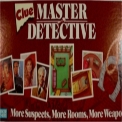Friday, September 24: Bandersnatches
STORY-DRIVEN
by Steven Steinbock
At the risk of repeating myself, I’m going to weigh in on the plot-driven versus character-driven debate. My conclusion, the debate itself is drivel-driven. Plot and character are two elements that fit into a balanced system that we call fiction. Comparing it to the Yin and Yang of Taoism isn’t woo-woo hokum. It’s a practical reality.
I find that when people claim that they write character-driven fiction, they’re showing off a pretension that says they’re somehow above genre writing, that their books might get shelved with mystery and suspense, but it’s really better than all that. Drivel. On the other hand, I don’t hear many people claiming to write plot-driven fiction. There are those (and I’m among them) who extol the virtues of plot, mainly because no one else does.
In a moment I’ll share with you a personal anecdote – something that recently occurred during the course of my own writing – that illustrates the interrelationship of plot and character.
I can’t pretend to understand the complexities of this thing we call story. I have read and listened to a variety of theorists who claim to have the formula. Some of them offer ideas and strategies that make sense, and may actually help writers to write better fiction. But most of the theories and systems have a reek of snake oil. It makes me wonder, if these gurus know so much, why aren’t their novels and screenplays on any blockbuster lists?
But I do think – and I apologies if this starts to sound spiritual – that Story is something that, once created, exists as a very real entity that hovers in the space between the writer, the reader, and the printed page.
In writing my current fiction project (a novel), I recently had an experience that reminded me how plot drives character, which drives plot, which drives character, ad infinitum. I was stuck at an action point in the book. In order for the plot to move forward, I had to get my lead character to go alone into a house at night, a house that had just had the crime scene tape removed a few hours earlier. I was caught in a plausibility trap. In order to keep from sounding like something from a Mary Roberts Rinehart or Carolyn Wells (with all respects to Mmes. Rinehart and Wells), I had to come up with a good reason for him to go in.
The reason, of course, was that the owner of the empty house asked my lead character to go in. Why? Because from the neighbor’s house, where she and her daughter were staying ever since a murder occurred there, her daughter saw lights coming from the house.
I’d already established that the owner of the house (whose ex-husband was found dead in her darkroom) is something of an artsy and spiritual type, while her teenage daughter is the straightforward, and in some ways, the more responsible one. But I had to ask myself, if the daughter had seen lights in the empty house, why the hell wouldn’t they call the police rather than calling my lead character? The obvious reason is that if she called the police rather than my lead character, I wouldn’t have much of a story. But I had to discover the reason within the story. There had to be a real, practical, and plausible reason why the woman wouldn’t want to call the police.
When I was at the point of giving it up for the day I had a eureka moment. What if . . . the neighbor, seeing that her friend was unable to relax after the discovery of a body in her darkroom, suggests a little marijuana. So the two middle-aged women smoke a joint. When the teenage daughter reports that she saw lights in their house next door, the two women are feeling a little too high (read “paranoid”) to call the police. They call my lead character instead. Now I had a broad, three dimensional tableau of characteristics, attitudes, interactions, and responses to play with. We get to see the teenage daughter annoyed at her mother’s irresponsible behavior. We get to see another dimension (in literally an altered state of consciousness) of the mother. We get to see my lead character’s surprise at the whole scenario. Most importantly: the plot problem was solved AND we see the characters in an amusing and very believable situation.
One final note: Out of curiosity, I checked online to see if anyone else out there is using the expression story-driven. Yes, it turns out. But only among video-game developers. Go figure.





















I loved this look under the hood. (I want to read your novel when you think it’s in good enough shape for sharing, Steve).
It should come as no surprise that I am in complete accord with your sentiments regarding the idiot dichotomy between plot v. character, as I have raved about here.
People who indulge in this false distinction are intellectually lazy and do so to impart an appearance of sophistication. It reminds me of the hip unshaven lunch-mates I hear loudly discussing their brilliant screenplays in L.A. bistros when all I want is to munch on my sandwich in peace. Oh, grow up and buy a razor.
“Drivel-driven” made me very happy. Good piece.
Loved the illustration, too. And “Grow up and by a razor.” Was it Esquire, many years ago, that featured on the cover a chimpanzee, sitting poolside, talking about the screenplay he was working on?
Great column. EVERY good story has a balance of plot and character, period. Story-driven indeed.
What develops in the darkroom? Hmm…
Steve, this true account wouldn’t work in fiction:
Near me was a troublesome rental house that was supposed to be empty but showed flickers of light at night. The next morning, a deputy arrived to check it out. She refused to enter and insisted the neighbors go in while she stood by. So there I was, first through the door…
Her strong sense of self-preservation suggested she watched more of those Halloween on Elm Street movies than I did.
Thanks for the comments, everyone.
Leigh, that’s a great story. If you included that episode in a piece of fiction, most readers would say “That’s too implausible.” Funny how real-life seldom makes as much sense as fiction does.
Funny how real-life seldom makes as much sense as fiction does.
Fiction has more rules.